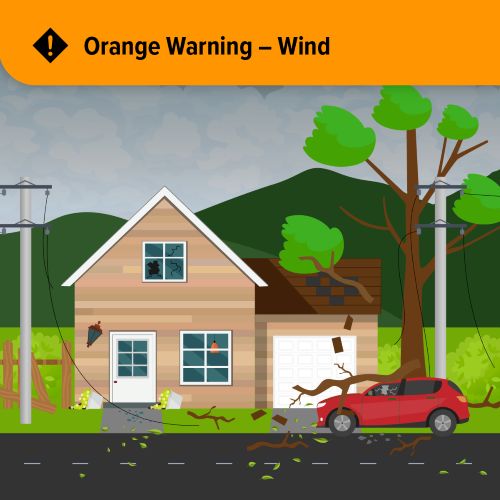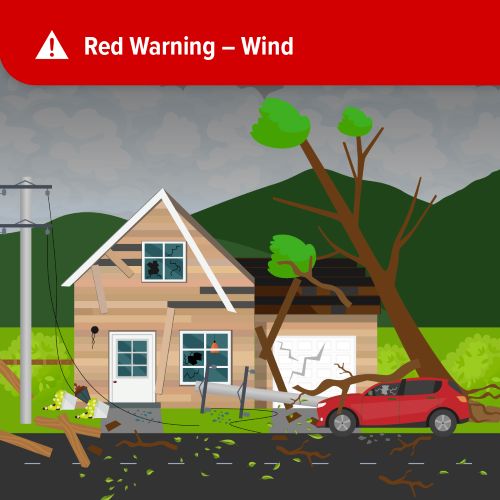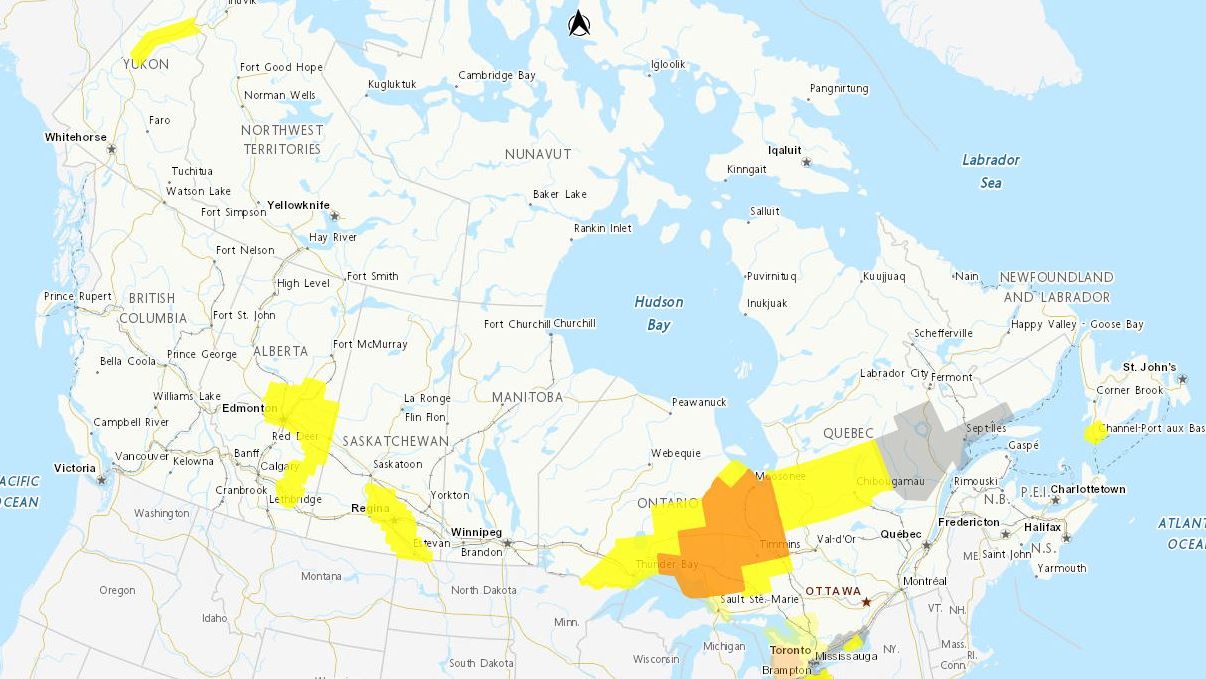The federal government is changing the way weather alerts appear on the Environment and Climate Change Canada (ECCC) website.
Weather warnings posted on the site will now be colour-coded as yellow, orange, or red – with each colour suggesting a different severity.
Yellow alerts will be the most common, and are used when weather may cause damage, disruption and some risk of injury. “Impacts are likely moderate, localized, and/or short term,” according to the federal government.
Meanwhile, orange alerts will be issued when severe weather is likely to cause “significant damage” or disruption and pose a greater risk of injury, according to ECCC. “Impacts can be major, widespread, and/or may last a few days.”
Red alerts will be rare, and will only be issued when “very dangerous and possibly life-threatening weather will cause extreme damage and disruption.”
When a red alert weather warning is in effect, impacts are expected to be widespread and prolonged.
Examples of a red alert weather event include the 2021 atmospheric river in B.C. that damaged highways and caused flooding, the 2020 “snowmageddon” event in St. John’s NL, or the ice storm of 1998 that occurred in Ontario and Quebec, says ECCC.
A visual example of what each weather alert colour indicates can be found in the slideshow below:
 (Environment and Climate Change Canada)
(Environment and Climate Change Canada) (Environment and Climate Change Canada)
(Environment and Climate Change Canada) (Environment and Climate Change Canada)
(Environment and Climate Change Canada)
“A new colour-coded system will make it easier to quickly understand the severity of extreme weather and its expected risk at a glance,” said the federal government on Wednesday.
“This new system is part of the ongoing modernization of our public weather program and aligns with best practices worldwide, including those promoted by the World Meteorological Organization.”
Previously, all weather warnings issued by ECCC were posted as red on the organization’s interactive map. Now, all different categories of weather alerts – such as warnings, advisories, or watches – will use the yellow, orange and red colour-coded system.
Meanwhile, special weather statements, which are issued when weather conditions are expected to be “unusual, inconvenient, or are cause for potential concern,” will remain grey.
Weather alerts can be found on the Environment and Climate Change Canada website.
“Canadians everywhere need timely, reliable alerts and the knowledge to act when hurricanes, wildfires, or other climate-related emergencies threaten their community,” said Eleanor Olszewski, minister of emergency management and community resilience.
“By strengthening our national weather alert program, we are making sure people get clear information they can count on so they can prepare, adapt, and stay safe in the face of any weather event,” she said.
READ MORE: National public alert system faces uncertain future

